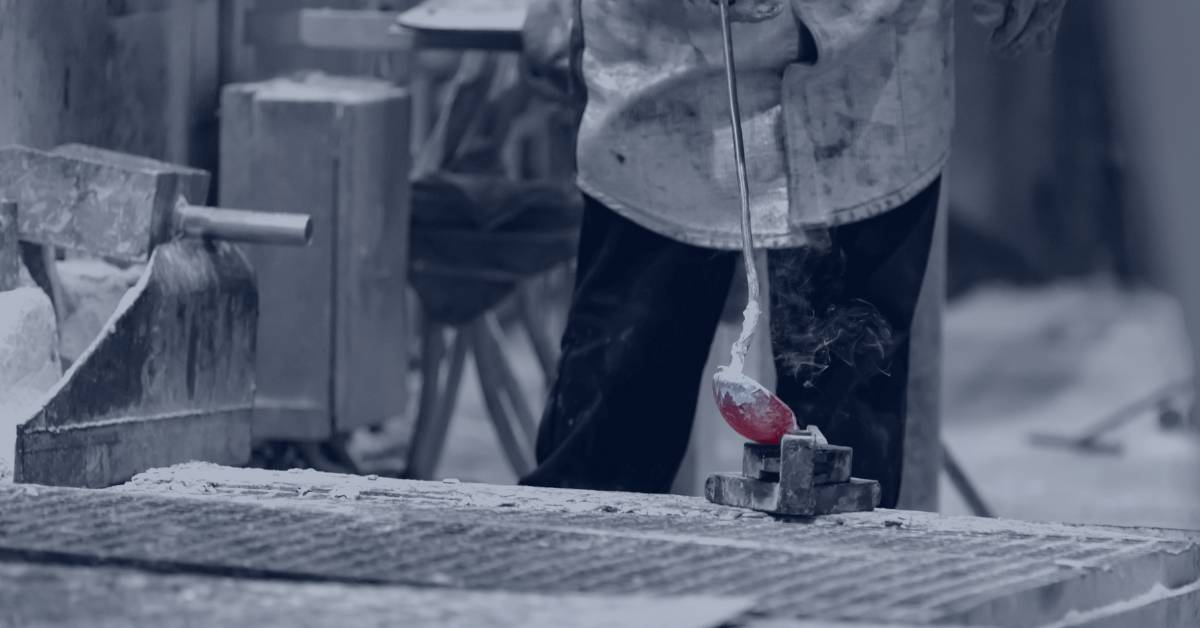An Unbiased View of Aluminum Castings Company
Table of ContentsAluminum Castings Company Fundamentals ExplainedTop Guidelines Of Aluminum Castings CompanyNot known Details About Aluminum Castings Company The Best Guide To Aluminum Castings CompanyAll About Aluminum Castings CompanyA Biased View of Aluminum Castings CompanyWhat Does Aluminum Castings Company Mean?The Only Guide for Aluminum Castings Company
There are 2 primary types of die casting used in the light weight aluminum casting industry: warm chamber die casting and cool chamber pass away spreading. The key difference in between these approaches is how the molten metal is delivered to the mold. In hot chamber pass away casting, generally utilized for lower melting point steels, the fusion is directly attached to the maker, and a bettor compels the material via a gooseneck right into the die tooth cavity.The Ultimate Guide To Aluminum Castings Company
In these techniques, the mold is intentionally ruined or damaged away in order to remove the completed aluminum spreading. Usual processes under the category of expendable mold and mildew spreading consist of (investment spreading),,, and financial investment casting. When making customized aluminum parts utilizing expendable mold and mildews, manufacturers pour molten aluminum or aluminum alloys right into the mold, which is after that broken apart to launch the strengthened metal component.
The is just one of the oldest and most utilized types of aluminum spreading. It entails compacting specialty foundry sand, typically reinforced with clay or resin, around a specifically crafted reusable pattern that identifies the shape and inner information of the ended up light weight aluminum product. The pattern system incorporates risers and vents to manage the circulation of molten metal and to stop casting flaws such as contraction porosity.
The Main Principles Of Aluminum Castings Company

This mold is then preheated previous to the pouring of molten aluminum or aluminum alloy. As the metal fills up the covering, it catches the detailed information and fine surface finish of the mold and mildew. When cooled down, the ceramic is mechanically or chemically damaged away, enabling the elimination and separation of private cast parts.
The Best Guide To Aluminum Castings Company
Long-term mold and mildew spreading utilizes multiple-use steel mold and mildews and is optimal for mass production with consistent top quality and much less waste. Expendable mold and mildew casting uses single-use molds, like sand or foam, providing layout flexibility and lower tooling prices for prototypes or brief runs. Die casting is best for creating high quantities of light weight aluminum components that need tight tolerances, fine details, and smooth surfaces.
The Toshiba Device DC-J Series includes pass away casting equipments suitable for light weight aluminum. Understood for their durable building and high shot performance, these devices make certain reliable and accurate casting (Metal Foundry).

While light weight aluminum can be utilized in its pure kind, it is typically alloyed with various other steels to improve its buildings or the buildings of the various other steels. These alloys use enhanced efficiency for various applications. Aluminum alloys are categorized right into 8 series, phoned number from one to eight. The initial number(s) of the number indicate the key alloying aspect incorporated with light weight aluminum.
Aluminum Castings Company - An Overview
This alloying boosts the toughness and firmness of aluminum yet lowers its ductility and rust resistance. The 3000 series alloys are mainly alloyed with manganese.
In addition, it features high ductility and an extremely smooth finished surface. The 4000 collection alloys are alloyed with silicon, which decreases the melting point and enhances fluidness. This makes it a prominent option for spreading, as it is simple to create in its molten state. The 4000 series is likewise more info typically used as a filler for welding and brazing applications.
How Aluminum Castings Company can Save You Time, Stress, and Money.
This collection is classified as a high-strength alloy, specifically suited for sheet and plate applications due to its outstanding weldability. Its resistance to rust from acids and alkalis makes it perfect for usage in severe and aggressive settings (Core Making). The 6000 series alloys are alloyed with both magnesium and silicon, providing a balance of strength, mechanical residential or commercial properties, and rust resistance
Handling the 6000 collection needs specialized and advanced equipment, which can be intricate and expensive. Nonetheless, this collection is understood for its outstanding corrosion and oxidation resistance, in addition to its ease of coating, treatment, and workability. The 7000 series aluminum alloys are the strongest and most resilient amongst aluminum types, with strength similar to about two-thirds of industrial-grade A3 steel.
More About Aluminum Castings Company
Zinc is the key alloying element in the 7000 collection, improving the solidity of the aluminum, even though zinc's hardness resembles that of light weight aluminum on the Mohs range. The 8000 series aluminum alloys are primarily alloyed with tin, in addition to percentages of copper and nickel (Sand Mold). While these alloys supply lower toughness compared to various other collection, they master machinability and put on resistance
Light weight aluminum cast heatsinks are electrically conductive, enabling them to be based effectively. They are commonly cast with integrated functions that lessen the demand for secondary operations, such as additional machining or setting up, leading to additional expense financial savings. Aluminum spreading is often used to produce brackets for both durable industrial devices and home devices.
Excitement About Aluminum Castings Company
The single-piece construction of aluminum brackets improves their strength and toughness, decreasing the likelihood of failure. If holes are needed, they can be consisted of directly in the casting mold, decreasing the requirement for post-production completing (https://www.easel.ly/create/design?id=https://s3.amazonaws.com/easel.ly/all_easels/7293773/blank&key=pri). Makers have increasingly taken on aluminum spreading for golf tools as a result of its durability, stability, and convenience in shaping